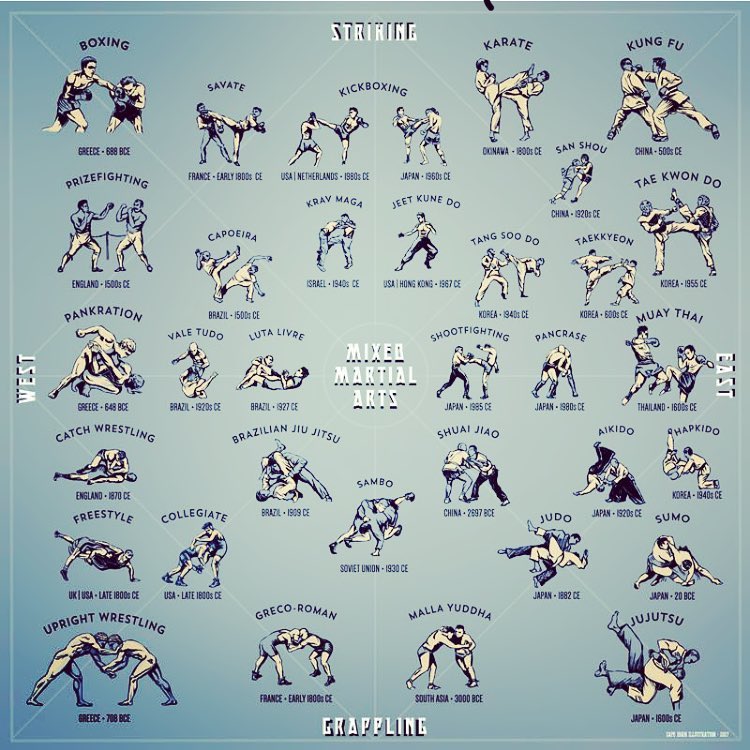Unwinding The Mystery Of Numerous Fighting Style Self-Controls: A Guide To Martial Arts, Taekwondo, And Extra
Unwinding The Mystery Of Numerous Fighting Style Self-Controls: A Guide To Martial Arts, Taekwondo, And Extra
Blog Article
Write-Up Created By-Borch Weiner
Are you tired of sensation overwhelmed by the huge globe of fighting styles? With many designs to select from, it can be simple to get shed in a sea of punches, kicks, and mystical names. Yet fear not!
This conversation will demystify the various fighting styles designs, taking you on a journey from the effective strikes of Karate to the dynamic kicks of Taekwondo. Get ready to uncover the origins, methods, and viewpoints behind these old art types.
So, tighten your belt and prepare to start an informing expedition into the fascinating world of martial arts.
Origins of Martial Arts Styles
The beginnings of martial arts designs can be traced back to old worlds and their demand for protection and battle strategies. Throughout history, various cultures established their own one-of-a-kind methods of fighting, each with its very own set of techniques and approaches.
In China, for example, martial arts styles such as Kung Fu and Tai Chi were developed as a way of protection and boosting physical and psychological health.
In Japan, the samurai warriors developed styles like Karate and Judo, concentrating on discipline, precision, and mastery of the body.
Similarly, in Korea, Taekwondo emerged as a martial art stressing high kicks, quick activities, and psychological fortitude.
These very early human beings laid the foundation for the diverse array of fighting styles designs that exist today, each with its own rich background and social significance.
Methods and Educating Methods
To grasp fighting styles styles, professionals have to find out numerous techniques and training methods.
Methods are the details motions and actions utilized in battle, such as strikes, kicks, throws, and blocks. Various fighting styles styles have their very own one-of-a-kind set of methods that professionals should grasp through rigorous training.
Training techniques differ depending on the style, yet they generally entail a combination of physical fitness, drills, competing, and types.
krav maga worldwide is critical to develop strength, versatility, and endurance. what is the best martial art for real life situations -tune their methods and improve their rate and precision.
Competing permits practitioners to exercise their techniques in a regulated, practical environment. Types, additionally known as kata, are cut-and-dried series of movements that help practitioners develop muscular tissue memory and emphasis.
Philosophies and Concepts
Discovering the viewpoints and concepts of martial arts styles can provide you with a much deeper understanding of your selected discipline. Each martial art has its own one-of-a-kind philosophy and collection of guiding principles that form the method it's exercised.
As an example, Karate highlights technique, respect, and self-control. It instructs specialists to concentrate their body and minds, allowing them to protect themselves while keeping a feeling of inner tranquility.
On the other hand, Taekwondo puts a solid focus on rate, agility, and versatility. Its principles are rooted in the tenets of courtesy, integrity, determination, self-discipline, and resolute spirit.
Conclusion
Now that you've discovered the beginnings, techniques, and approaches of various fighting styles designs, you have a much deeper understanding of these old techniques.
Imagine a young karate pupil, experimenting steadfast determination and focus, breaking through boards with an effective strike.
Their trip showcases the commitment and stamina called for to master a martial art, reminding us that with self-control and willpower, anything is feasible.
